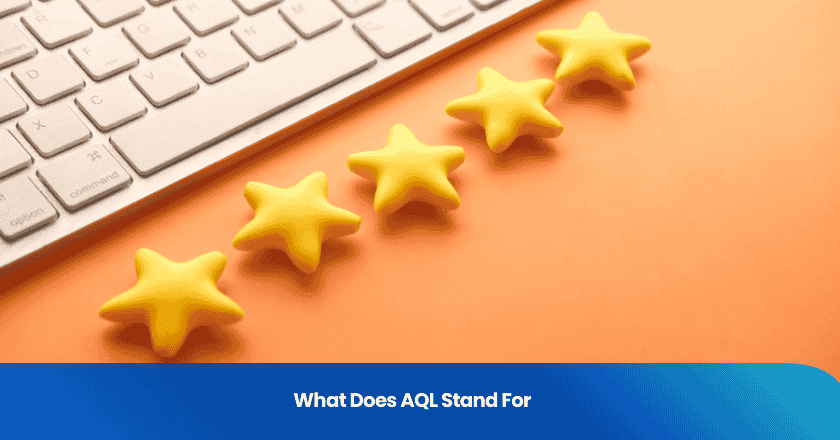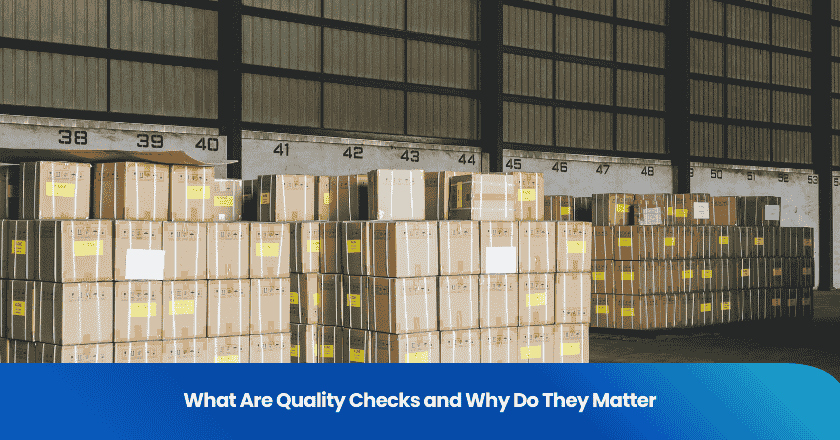
You often hear the term aql in manufacturing and quality control. When you ask what does aql stand for, you find that aql means Acceptance Quality Limit. In the past, many experts used acceptable quality level, but the industry now recognizes Acceptance Quality Limit as the standard. You use aql to set clear boundaries for product inspections. Aql helps you decide if a batch meets the required standards. When you understand what does aql stand for, you see how aql protects your interests and ensures quality. The concept of acceptable quality level shaped the evolution of aql, making it essential in your quality control process. You rely on aql to maintain consistency and reduce risks.
Key Takeaways
- AQL stands for Acceptance Quality Limit, which sets the maximum number of defects allowed in a product batch during inspection.
- Using AQL helps you make fair, clear decisions to accept or reject shipments based on quality standards.
- AQL uses a statistical sampling method to check a portion of products, saving time while ensuring reliable quality control.
- Many industries rely on AQL to maintain product quality, reduce risks, and build trust with customers and suppliers.
- Following AQL standards like ISO 2859-1 makes your inspection process consistent, transparent, and easy to communicate.
What does AQL stand for
Acceptance Quality Limit
You may wonder what does aql stand for and why the term matters in your daily work. The industry once used acceptable quality level as the main term. Over time, experts realized that this phrase did not fully capture the purpose of aql. The term acceptance quality limit now gives you a clearer idea of how you use aql in inspections. You set aql as the maximum number of defects you can accept in a batch. This limit helps you decide if you should accept or reject a shipment. When you use aql, you protect your business from poor quality and ensure your products meet customer expectations.
Note: The shift from acceptable quality level to acceptance quality limit reflects a more precise approach to quality control. You no longer focus on an average level of defects. Instead, you set a strict boundary that defines what you will accept.
Acceptable Quality Level
You still see the term acceptable quality level in some documents and discussions. This phrase refers to the maximum number of defects you might consider acceptable during inspection. In the past, you used acceptable quality level to describe the average quality you expected from a supplier. Now, you use aql to set a clear limit. This change helps you avoid confusion and makes your inspection process more reliable.
When you ask what does aql stand for, you see that both terms aim to help you control product quality. However, acceptance quality limit gives you a stronger tool. You use aql to set clear rules for your inspections. You decide in advance how many defects you will allow. If a batch exceeds this number, you reject it. If it stays within the limit, you accept it.
Here is a simple way to understand the difference:
| Term | Focus | How You Use It |
|---|---|---|
| Acceptable Quality Level | Average number of defects | General guideline |
| Acceptance Quality Limit | Maximum number of defects | Strict pass/fail boundary |
You use aql to make your quality control process fair and consistent. When you know what does aql stand for, you can explain your standards to suppliers and customers. You reduce risks and improve trust in your products.
AQL meaning
Statistical Method
You use aql as a statistical method to control product quality. This approach helps you decide how many samples to inspect from a batch. You do not need to check every single item. Instead, you select a specific number of units based on statistical principles. This method saves time and resources while still giving you reliable results.
Aql sets a clear threshold for the number of defects you can accept. You determine this limit before you start the inspection. If the number of defects in your sample stays within the aql, you accept the batch. If it exceeds the aql, you reject it. This process gives you a scientific way to make decisions about product quality.
By using aql, you rely on data and probability, not guesswork. This method supports your quality management system and ensures consistency in your inspections.
Here is a simple breakdown of how the statistical method works with aql:
1. You define the aql value for your product.
2. You select a random sample from the batch.
3. You inspect the sample for defects.
4. You compare the number of defects to the aql.
5. You accept or reject the batch based on the results.
This process helps you maintain high standards in your quality management efforts. You can trust the results because the method uses proven statistical techniques.
Quality Control Use
You use aql as a core tool in your quality control process. It helps you set clear expectations for suppliers and manufacturers. When you communicate the aql value, everyone understands the maximum number of defects allowed. This clarity reduces misunderstandings and improves cooperation across your supply chain.
Aql plays a vital role in quality management. You use it to monitor production and catch problems early. By setting strict limits, you prevent defective products from reaching your customers. This approach protects your reputation and builds trust with buyers.
You can apply aql in many areas of quality management. For example, you might use it to inspect raw materials, finished goods, or components. Each time, you set the aql based on the level of risk you are willing to accept. This flexibility allows you to tailor your inspections to different products and industries.
Tip: Always document your aql values and inspection results. This practice strengthens your quality management system and provides evidence of your commitment to quality.
Aql also supports continuous improvement. When you track inspection results over time, you can spot trends and identify areas for improvement. You use this information to refine your processes and raise your quality standards.
Here is a quick reference table for how you might use aql in quality management:
| Application Area | How You Use AQL | Benefit to Quality Management |
|---|---|---|
| Incoming Materials | Set aql for supplier batches | Reduce risk of poor inputs |
| In-Process Checks | Monitor production quality | Catch defects early |
| Final Inspection | Approve finished goods | Ensure customer satisfaction |
You see that aql is more than just a number. It is a practical tool that supports every stage of your quality management process. By using aql, you make informed decisions, reduce risks, and deliver better products.
Where is AQL used
Industries
You find aql in many industries that require strict quality management. Manufacturers in electronics, textiles, automotive, and medical devices rely on aql to maintain product standards. You see aql in the food industry, where safety and consistency matter. Aerospace and defense sectors also use aql to ensure every component meets exact requirements. You use aql in consumer goods to protect your reputation and meet customer expectations.
Aql helps you set clear inspection rules, no matter what industry you work in. This approach gives you confidence that your products meet the right standards.
Here is a quick look at industries where aql plays a key role:
| Industry | Why Use AQL? |
|---|---|
| Electronics | Prevent faulty components |
| Textiles | Ensure fabric quality |
| Automotive | Meet safety regulations |
| Medical Devices | Protect patient safety |
| Food | Maintain hygiene standards |
| Aerospace | Guarantee reliability |
| Consumer Goods | Satisfy customer demands |
Applications
You apply aql in practice during many stages of production and inspection. When you receive raw materials, you use aql to check for defects before starting manufacturing. During production, you inspect samples to catch problems early. Before shipping finished goods, you use aql to decide if the batch meets your standards.
You also use aql in quality management audits. You review supplier performance and ensure compliance with contracts. In warehouse operations, you inspect stored products using aql to prevent issues before delivery.
Tip: You can adjust your aql values based on the risk level and product type. This flexibility helps you improve your quality management system.
You see aql in practice in these common applications:
- Incoming material inspection
- In-process quality checks
- Final product release
- Supplier audits
- Warehouse inspections
Aql gives you a structured way to manage risk and maintain high standards. You make better decisions and build trust with your customers by using aql in every step of your process.
AQL standards
ISO 2859-1
You encounter aql standards in many international guidelines. One of the most recognized is ISO 2859-1. This standard gives you a clear framework for inspection by sampling. You use ISO 2859-1 to decide how many units to check in a batch and how many defects you can accept. The standard helps you set aql values that match your risk tolerance and product requirements. You find ISO 2859-1 in industries like electronics, textiles, and medical devices. The standard supports your efforts to maintain consistent quality across different suppliers and production lines.
ISO 2859-1 makes your inspection process transparent. You can explain your aql standards to partners and customers with confidence.
You see that ISO 2859-1 uses tables to guide your sampling decisions. You select a sample size code letter based on your batch size. Then, you use the table to find the number of samples and the acceptance criteria. This process helps you apply aql in a systematic way.
Sampling Process
You use the sampling process to apply aql in real inspections. First, you define your aql value based on product type and customer expectations. Next, you choose a random sample from the batch. You inspect each unit for defects and record the results. If the number of defects stays within the aql limit, you accept the batch. If it exceeds the limit, you reject it.
Here is a simple checklist for your sampling process:
- Set your aql value
- Select the sample size using ISO 2859-1
- Inspect each unit for defects
- Compare results to aql standards
- Decide to accept or reject the batch
You may hear some misconceptions about aql values. Some people think aql means the average defect rate in every batch. In reality, aql sets the maximum number of defects you allow in your sample. You do not guarantee every batch will meet this rate, but you use aql to control risk and improve quality.
Tip: Always communicate your aql standards clearly. This practice helps you avoid misunderstandings and ensures everyone follows the same rules.
Why AQL matters
Product Acceptance
You rely on aql to make clear decisions about product acceptance. When you receive a shipment, you need a method to judge if the products meet your standards. Aql gives you that method. You set a specific limit for defects, and you use this limit during inspections. If the number of defects in your sample stays within the aql, you accept the batch. If the defects exceed the aql, you reject it. This process protects your business from poor quality and helps you maintain trust with your customers.
Aql also supports communication with suppliers. You can explain your requirements using aql values, so everyone understands the expectations. This shared understanding reduces disputes and helps you build stronger partnerships. When you use aql, you show your commitment to quality and consistency.
Using aql for product acceptance means you have a fair, objective way to evaluate every batch.
Defect Limits
Aql sets clear defect limits for your inspections. You decide in advance how many defects you will allow in a sample. This approach removes guesswork and personal bias from your quality control process. You use aql to define acceptable defect levels, so your team knows exactly what to look for during inspections.
Here is a simple table to show how aql helps you manage defect limits:
| Inspection Step | AQL Role | Benefit |
|---|---|---|
| Set defect limits | Define maximum allowed | Consistent decisions |
| Inspect samples | Compare to aql | Objective evaluation |
| Accept or reject | Use aql as the standard | Reliable outcomes |
You can adjust your aql values based on product type or customer needs. This flexibility lets you control risk and improve quality over time. By setting clear defect limits, you make your inspection process transparent and repeatable.
Remember, aql does not guarantee zero defects. It helps you manage risk and maintain quality within agreed limits.
You see that aql sets a clear standard for quality control. You use aql to define defect limits and guide inspections in many industries. You rely on aql to protect your business and maintain trust with customers. When you apply aql, you improve consistency and reduce risks. You find aql in electronics, textiles, and medical devices. You use aql to communicate expectations and support product acceptance. You understand that aql helps you make fair decisions. You strengthen your inspection process with aql. You build confidence in your products by using aql.
FAQ
What does aql mean in product inspection?
You use aql to set the maximum number of defects allowed in a sample during inspection. This method helps you decide if you should accept or reject a batch based on clear quality standards.
How do you choose the right aql value?
You select the aql value based on product type, customer expectations, and risk tolerance. Lower values mean stricter quality control. You adjust the value to match the importance of the product.
Is aql used in every industry?
Many industries use aql, including electronics, textiles, automotive, and medical devices. You rely on this method to maintain consistent quality and meet regulatory requirements.
What happens if a batch fails the aql inspection?
If the number of defects exceeds the aql limit, you reject the batch. You may request rework, replacement, or further investigation to address quality issues.
Tip: Always document your inspection results to support your quality management process.
Grow your business with TradeAider Service
Click the button below to directly enter the TradeAider Service System. The simple steps from booking and payment to receiving reports are easy to operate.



